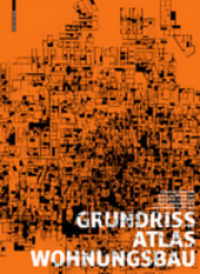- ホーム
- > 洋書
- > 英文書
- > History / World
Full Description
This volume expands perspectives on infrastructure that are rooted in archaeological discourse and material evidence.
The compiled chapters represent new and emerging ideas within archaeology about what infrastructure is, how it can materialize, and how it impacts and reflects human behavior, social organization, and identity in the past as well as the present. Three goals central to the work include: (1) expand the definition of infrastructure using archaeological frameworks and evidence from a wide range of social, historical, and geographic contexts; (2) explore how new archaeological perspectives on infrastructure can help answer anthropological questions pertaining to social organization, group collaboration, and community consensus and negotiation; and (3) examine the broader implications of an archaeological engagement with infrastructure and contributions to contemporary infrastructural studies. Chapters explore important aspects of infrastructure, including its relationality, scale, history, and relevance, and provide archaeological case studies that examine the social repercussions of infrastructure and the various ways it has materialized in the past. This compilation ultimately expands the discourse of infrastructure in archaeology and social sciences more broadly.
Social scientists can turn to this volume for insights into an archaeologically informed perspective on infrastructure relevant to the study of past and current human behavior.
Contents
1. New Perspectives on Material Infrastructures: Emerging Ideas within Archaeological Discourse 2. Perspectives: Infrastructure as Relational 3. From the Ground Up: Earthen and Botanical Traces of Biotic Infrastructures from Ancient Amazonia 4. Indigenous Infrastructure: Iconography, Dance, and Nomadic Strategy in the Historic Ute (Núuchiu) World 5. Infrastructure and Interconnectivity in Pre-Columbian Amazonia 6. Perspectives: Scale of Infrastructure 7. Landscape Infrastructure and Local Infrastructure: Scales of Intervention in Urban Water Management 8. Desert Kites: Neolithic Infrastructure in the Margins 9. Perspectives: Historicity and Temporality of Infrastructure 10. Legacies of Infrastructure in Bronze and Iron Age China 11. Transportation Systems and Movement Infrastructure: Evaluating Use, Maintenance, and Modification of Roads at Angamuco, Michoacan (AD 250-1530) 12. Adena and Hopewell Institutional Responsibilities and Aging Infrastructure in the Middle Ohio Valley, USA 13. Perspectives: Relevance of the Archaeology of Infrastructure 14. Agricultural Infrastructure in the Kawaihae Uplands: Ancient Management to Modern Resilience 15. Consumption or Infrastructure? Theorizing Ceramics in Ancient Empires 16. Building Meanings as Places: The Archaeology of the Shellmounds and the Indigenous Infrastructure of the Amazon








